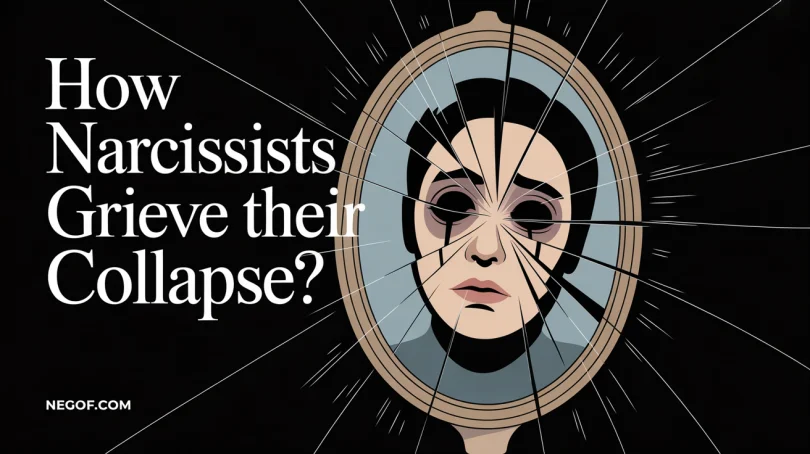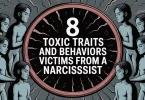Narcissistic collapse is a profound and transformative state that occurs when a narcissist can no longer secure a steady stream of high-quality narcissistic supply, attention, admiration, or validation. Despite exhaustive efforts, strategies, and manipulations, the narcissist faces a systemic failure to obtain this critical resource. They are ignored, ridiculed, rejected, abandoned, or forgotten, leading to a state of internal devastation known as narcissistic collapse.
This is not to be confused with the misnomer “failed narcissist,” which is more akin to a borderline personality. In this article, we’ll explore the narcissist’s internal and emotional reactions to collapse, its profound impacts, and the intricate process of grief and recovery that follows.
The Essence of Entitlement
At the heart of narcissistic collapse lies entitlement, a core belief that the narcissist deserves special treatment, admiration, and rewards without effort, merit, or investment. This sense of entitlement is disproportionate to their real-life achievements or contributions.
The narcissist believes their mere presence is a sufficient contribution, overestimating their role in relationships, workplaces, or conversations. This over-perception fuels a constant state of “deserving” the best, the most, and the first, often accompanied by envy toward others.
However, entitlement runs deeper than surface-level demands. It is the narcissist’s unconscious quest for unconditional love, a love they were often denied in childhood. Adverse childhood experiences, whether abuse, neglect, pampering, or instrumentalization, deprived the narcissist of maternal love untethered to performance.
As a result, they equate entitlement with the universe’s obligation to love them unconditionally. When this love, manifested as narcissistic supply, is withheld, the collapse feels like a profound loss of maternal affection, plunging the narcissist into a state of existential grief.
Related Topics:
How Narcissists Try to Control You?
How to Torture a Narcissist (Without Losing Yourself)
The Collapse: A Cataclysmic Loss
Narcissistic collapse is not merely a lack of attention; it is a catastrophic loss of the external regulation that the narcissist depends on to stabilize their emotions, mood, and sense of self-worth. Narcissistic supply attention, admiration, or even criticism, serves as a drug, mediating the narcissist’s sense of existence.
Without it, they feel they are dissolving, falling apart, or ceasing to exist. This loss triggers intense grief, as the narcissist mourns not only the absence of supply but also the obliteration of their internal landscape, the self-constructed identity built from external inputs.
This grief is compounded by shame, a hallmark of narcissistic collapse. Scholars suggest that pathological narcissism is a defense against deep-seated childhood shame. When collapse strips away these defenses, shame erupts volcanically, consuming the narcissist.
This can manifest as internal mortification, where the narcissist becomes their audience, humiliated by their failure to secure supply. Unlike external mortification, which is sudden and public, internal mortification unfolds as a process, yet the narcissist perceives it as abrupt due to their denial of warning signs. This denial, rooted in impaired reality testing, blinds them to the looming collapse until it engulfs them.
The Stages of Grief in Collapse
The grief following narcissistic collapse is complex and multifaceted, extending beyond the classic five-stage model proposed by Elisabeth Kübler-Ross. Below, we outline an expanded framework that captures the narcissist’s journey through collapse, incorporating shock, denial, anger, fear, and eventual reconstruction.
1. Shock and Numbing
The collapse is experienced as abrupt, unjustified, and intolerable, leading to emotional numbing. The narcissist freezes, their face a mask of marble, as they struggle to process the loss of supply.
2. Denial
To cope, the narcissist initially denies the reality of the collapse, pretending it hasn’t happened. This dissociative reaction shields them from the overwhelming trauma, but reality eventually intrudes.
3. Anger and Rage
As denial fades, rage emerges. Narcissistic rage, first noted by Heinz Kohut, manifests as tantrums or intense anger directed at the perceived sources of rejection or humiliation.
4. Fear and Disintegration
The absence of supply instills existential dread, as the narcissist feels they are dissolving. Panic sets in, leading to a loss of self-control and decompensation, where defenses collapse, and the narcissist experiences a terrifying absence of self.
5. Guilt and Soul-Searching
Emerging from disintegration, the narcissist feels guilty, not for moral wrongs but for their failure to secure supply. This prompts a SWOT-like analysis, where they assess what went wrong and strategize to restore self-efficacy.
6. Isolation and Reconstruction
To rebuild, the narcissist isolates, becoming schizoid to avoid external challenges to their fragile, reconstructed self. In this hermetic state, they craft a new grandiose fantasy, a narrative that restores their sense of divinity and omnipotence. They self-supply, becoming their audience, and emerge transformed, sometimes unrecognizable to those around them.
7. Bargaining
The narcissist re-enters reality, bargaining with others to accept their new narrative. This coercive phase involves molding and brainwashing those around them, though initial efforts often fail due to others’ disillusionment post-collapse.
8. Depression
Frustration from failed bargaining turns inward, becoming depression. The narcissist grapples with the reality of their diminished influence and the effort required to rebuild.
9. Acceptance and Reconstitution
Gradually, the narcissist accepts reality and works to impose their new fantasy on it. Through charisma, manipulation, and persistence, they convert others to their cause, finding meaning and hope in the new narrative. This marks the end of the grieving process, as the narcissist reconstitutes their familiar, grandiose self.
The Narcissist’s Lifelong Grief
Grief is not new to the narcissist; it is a constant undercurrent of their existence. Pathological narcissism is a post-traumatic state, characterized by prolonged, complicated grief over a lost maternal bond, unrealized potential, and fractured boundaries.
Early childhood experiences taught the narcissist to suppress emotions, particularly positive ones, as love led to pain and attachment to rejection. Collapse amplifies this grief, forcing the narcissist to confront their vulnerabilities in a way their defenses typically prevent.
In short
Narcissistic collapse is a transformative crisis that reshapes the narcissist’s internal world. It is a journey through shame, grief, and reconstruction, driven by the loss of narcissistic supply and the desperate need for unconditional love.
While the narcissist may emerge reconstituted, the process is arduous, often taking years. Understanding this phenomenon offers insight into the narcissist’s psyche, a fragile, grief-laden landscape masked by grandiosity.
By exploring these dynamics, we can better navigate interactions with narcissists and recognize the profound emotional undercurrents that drive their behavior.







Leave a Comment